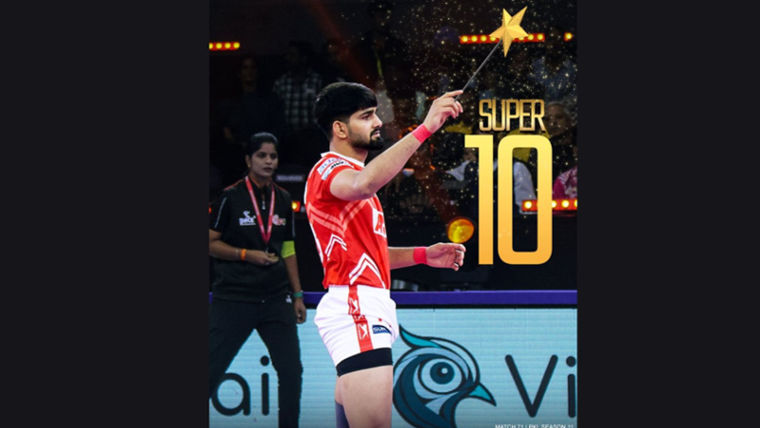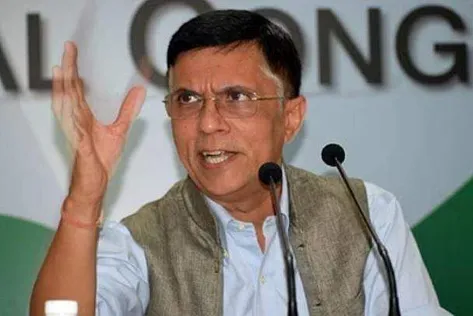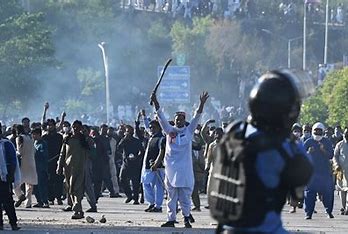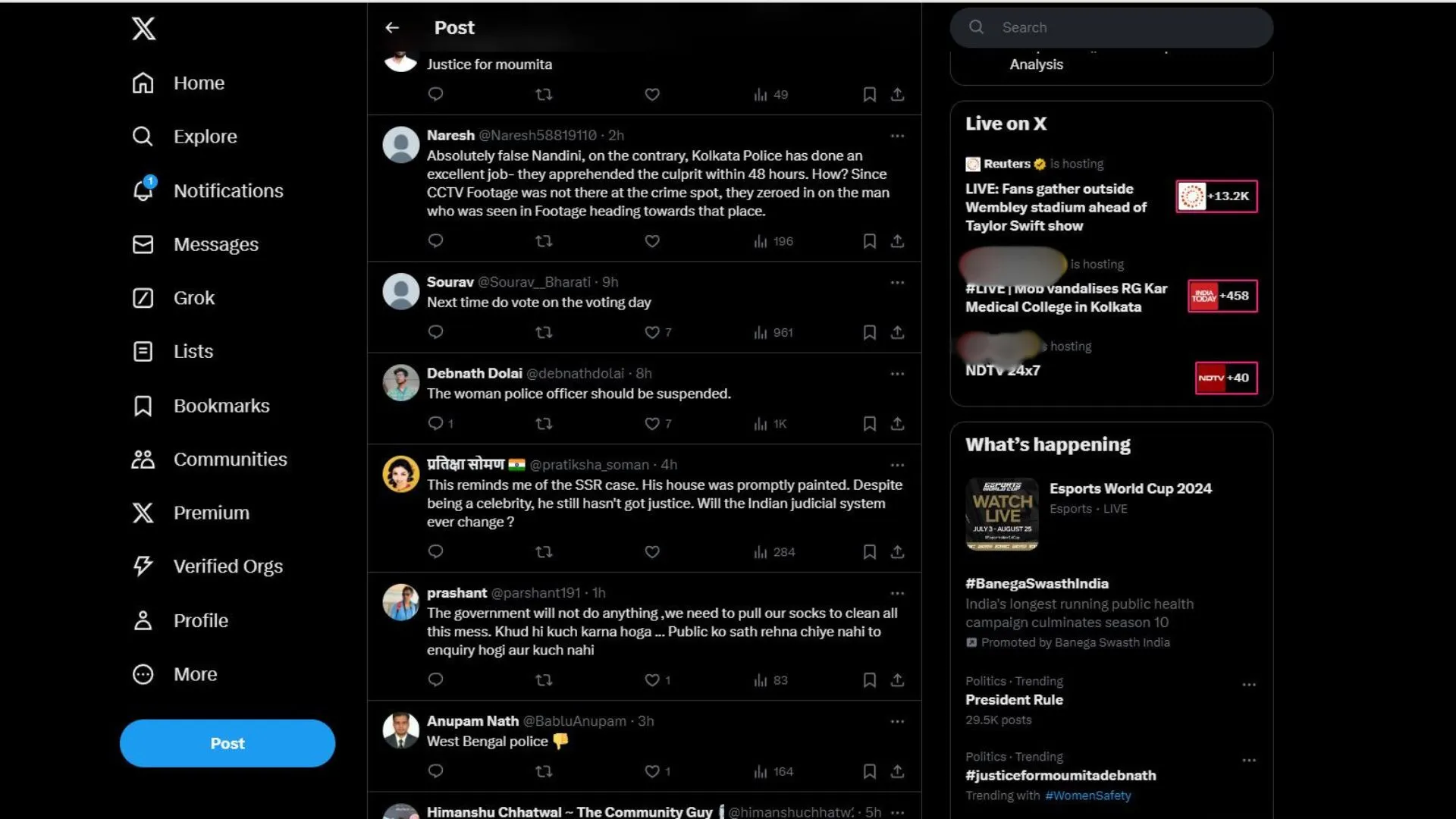
The tragic demise of the Kolkata doctor has ignited a firestorm of public anger, primarily fueled by the relentless churning of social media. While the digital age offers unprecedented opportunities for activism, it also presents a myriad of challenges that can obscure the truth and hinder justice.
Sensationalism or Scrutiny?
The initial reporting of the case by several media outlets, including prominent figures like Barkha Dutt, who described the incident as “absolutely insane” and “a violent mob,” has been characterized by sensationalism and oversimplification. The use of inflammatory language and graphic content, while designed to evoke strong emotions, risks obscuring the core issue: a heinous crime. The tendency to present the narrative in black-and-white terms, often neglecting potential complexities, can be misleading and counterproductive.
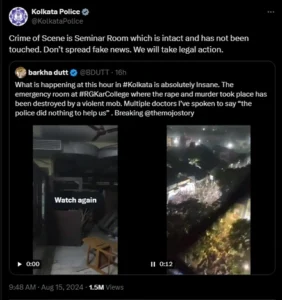
Misleading news story?
Dhruv Rathee’s involvement in the case is a prime example of how social media influencers can inadvertently contribute to the problem. His initial comparison to the Nirbhaya case, followed by its deletion, raised questions about external pressure. More importantly, his subsequent post revealing the victim’s identity was a grave breach of privacy and legal ethics. This incident underscores the need for influencers and media outlets to adhere to strict guidelines when handling sensitive cases.
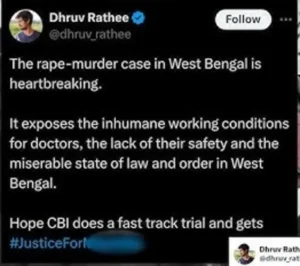
Dhruv Rathee tweet on Kolkata doctor’s rape-murder case
Police and Government Under Fire
Amidst the media frenzy, the Kolkata Police Commissioner, Vineet Goyal, has publicly blamed the media for the violence that erupted at the RG Kar Medical College and Hospital. He asserted, “My DCP, who was protecting the boys, is unconscious and what has happened here is because of the wrong, malicious media campaign, which has been going as far as Kolkata police are concerned” (Source: ANI, August 2024). While the destruction of the crime scene is undoubtedly a setback, it is essential to avoid shifting the blame entirely to the media. The primary focus should be on bringing the perpetrators to justice.
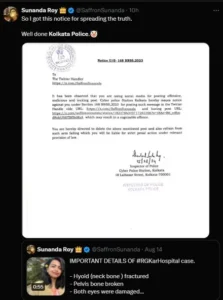
Kolkata Police on social media
Congress leader Supriya Shrinate has added fuel to the fire by accusing the West Bengal government of a cover-up. Commenting on the recent rape and murder of a female doctor, Shrinate said, “The incident was extremely unfortunate. What happened to the woman doctor raises a critical question: Where is the safety for women?” (Source: ANI, August 2024). Her criticism highlights the broader public frustration with the perceived mishandling of high-profile cases.
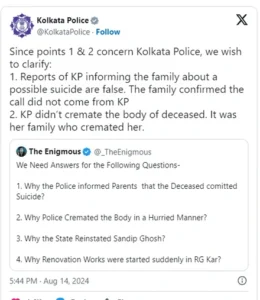
Kolkata police correcting rumours about the case on social media.
Beyond the Headlines
While the media’s role in amplifying public outrage is undeniable, it is equally important to focus on the facts and avoid speculation. The revelation that the 150mg figure in the post-mortem report refers to the weight of the uterus, not the quantity of semen, as falsely alleged on social media, is a stark reminder of the importance of accurate information. The ongoing forensic analysis will hopefully shed light on the number of perpetrators involved.
The post-mortem report has confirmed a brutal murder, contradicting initial claims of suicide. The victim’s family’s alleged initial briefing about a possible suicide raises further questions about the handling of the case in its early hours. Read here.
The Digital Age and Its Challenges
The case has also highlighted the complexities of online activism. While social media has been instrumental in raising awareness and demanding justice, it has also been a breeding ground for misinformation and hate speech. The importance of verifying information before sharing it cannot be overstated.
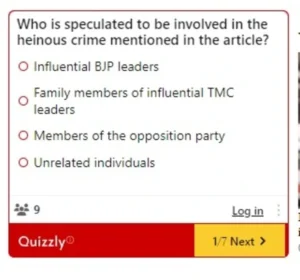
An advertisement on online content about the case.
Moreover, the fact that #justiceformoumitadebnath is trending on Twitter highlights a significant issue: a disregard for the law and the rights of the victim. As the Supreme Court of India has issued clear directives prohibiting the identification of rape victims, such actions not only violate the victim’s privacy but also contribute to a culture of victim-blaming and re-traumatization.
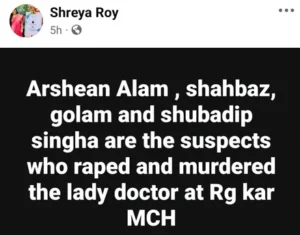
X user coming out with names of the alleged perpetrators.
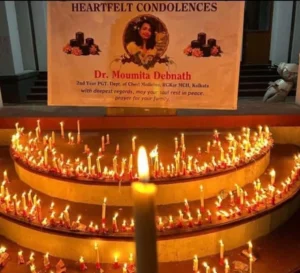
How we demand for justice for Kolkata doctor’s brutal rape-murder online.
The tragic death of the young doctor is a stark reminder of the urgent need for a comprehensive approach to addressing violence against women. This includes not only swift and effective law enforcement but also a concerted effort to change societal attitudes and behaviors. The media has a crucial role to play in this process by providing accurate, responsible, and empathetic reporting.
